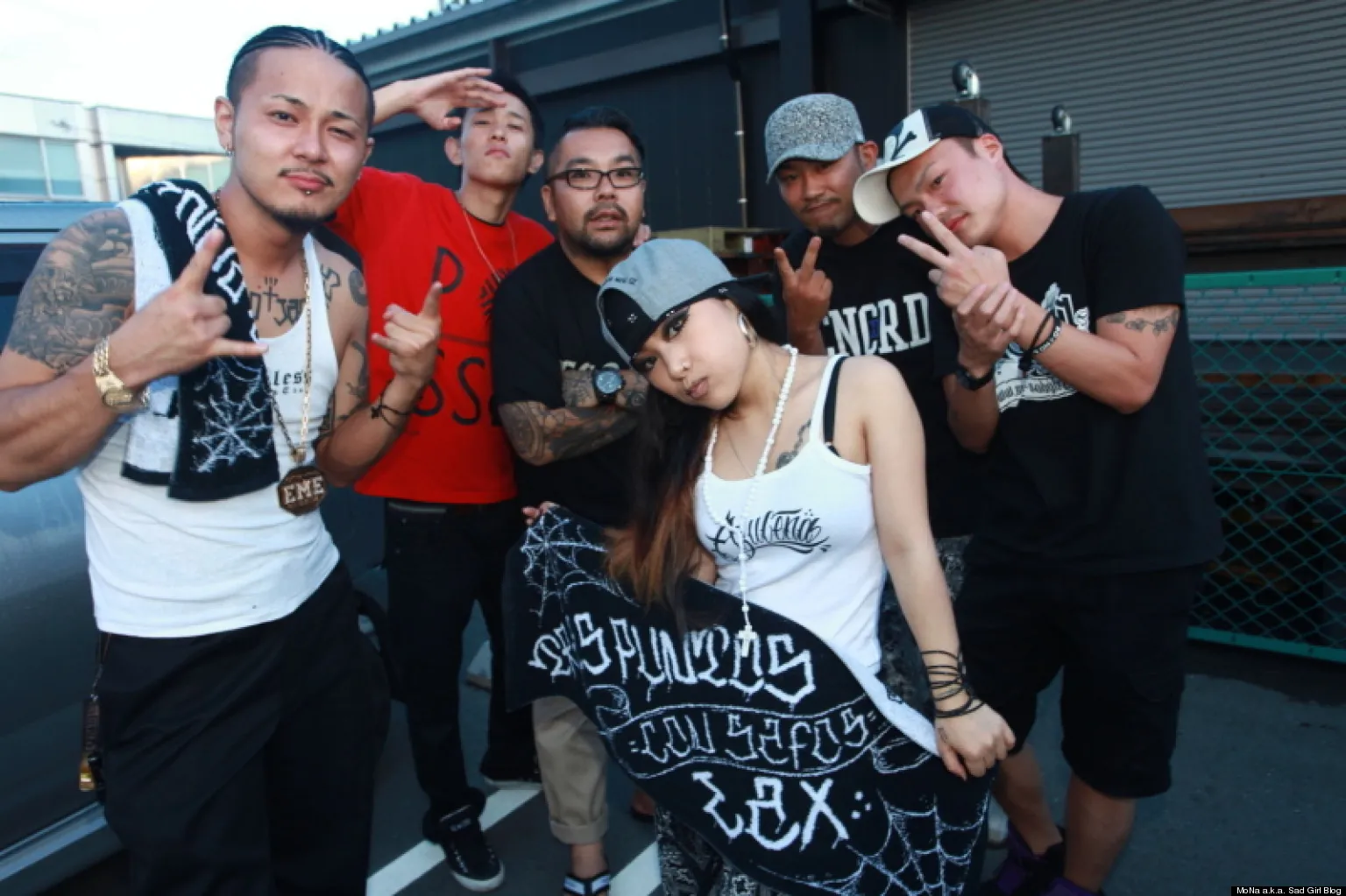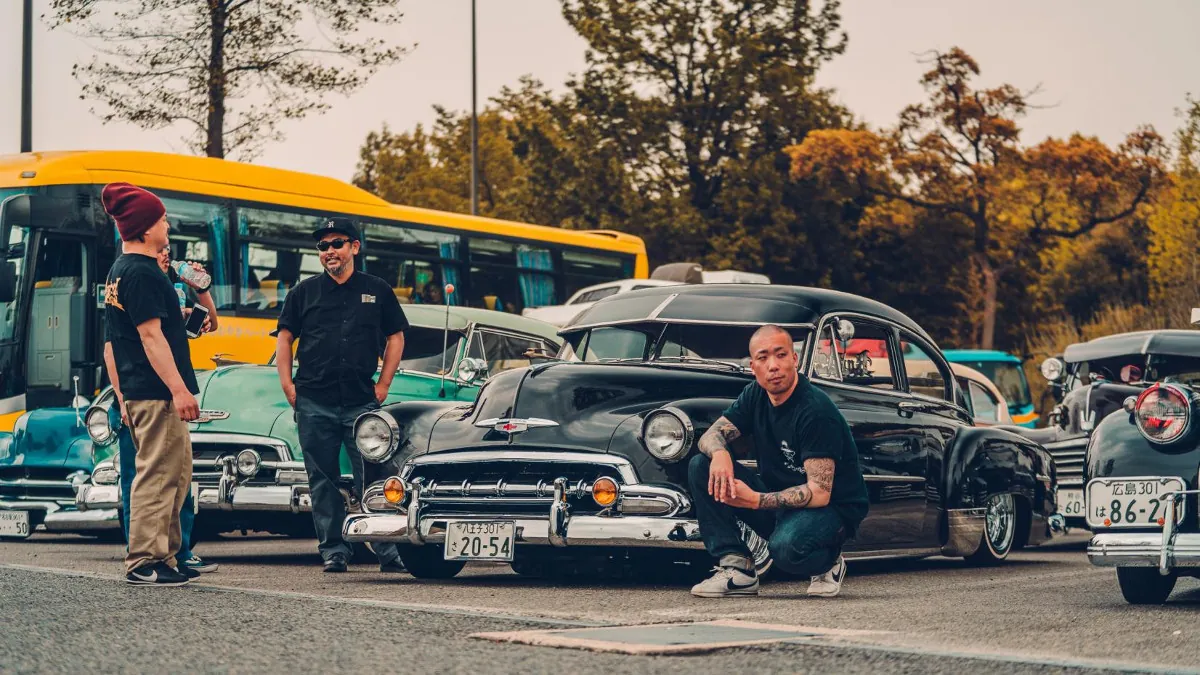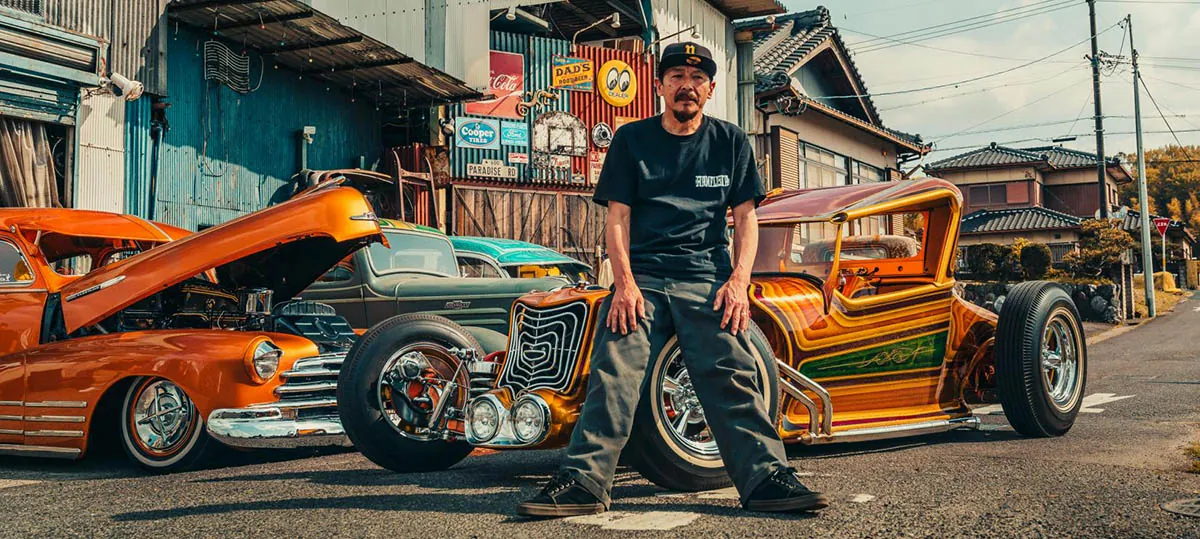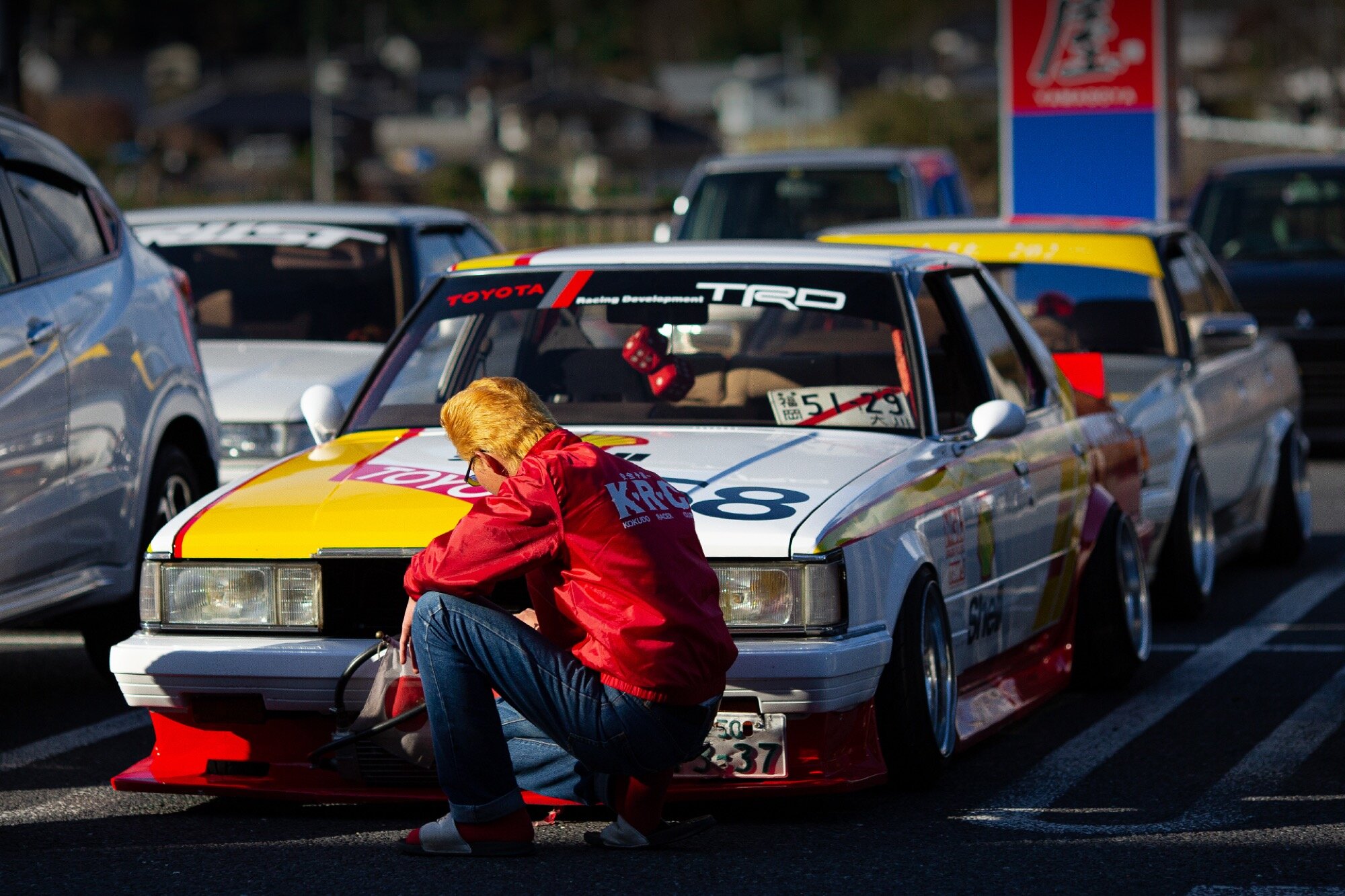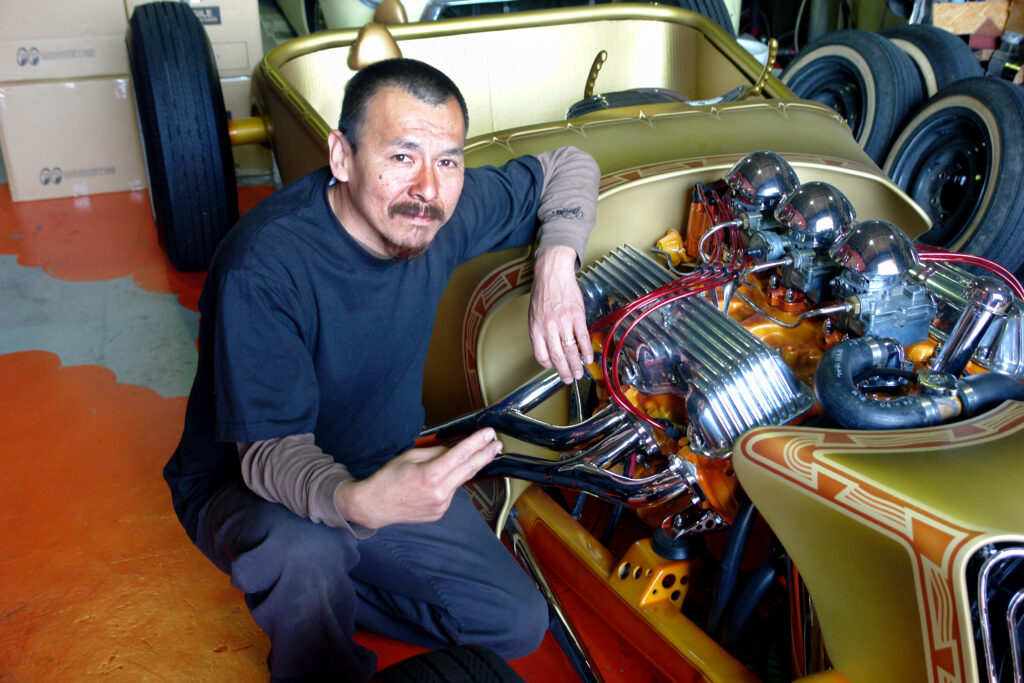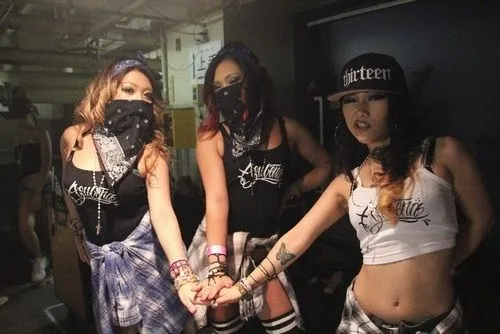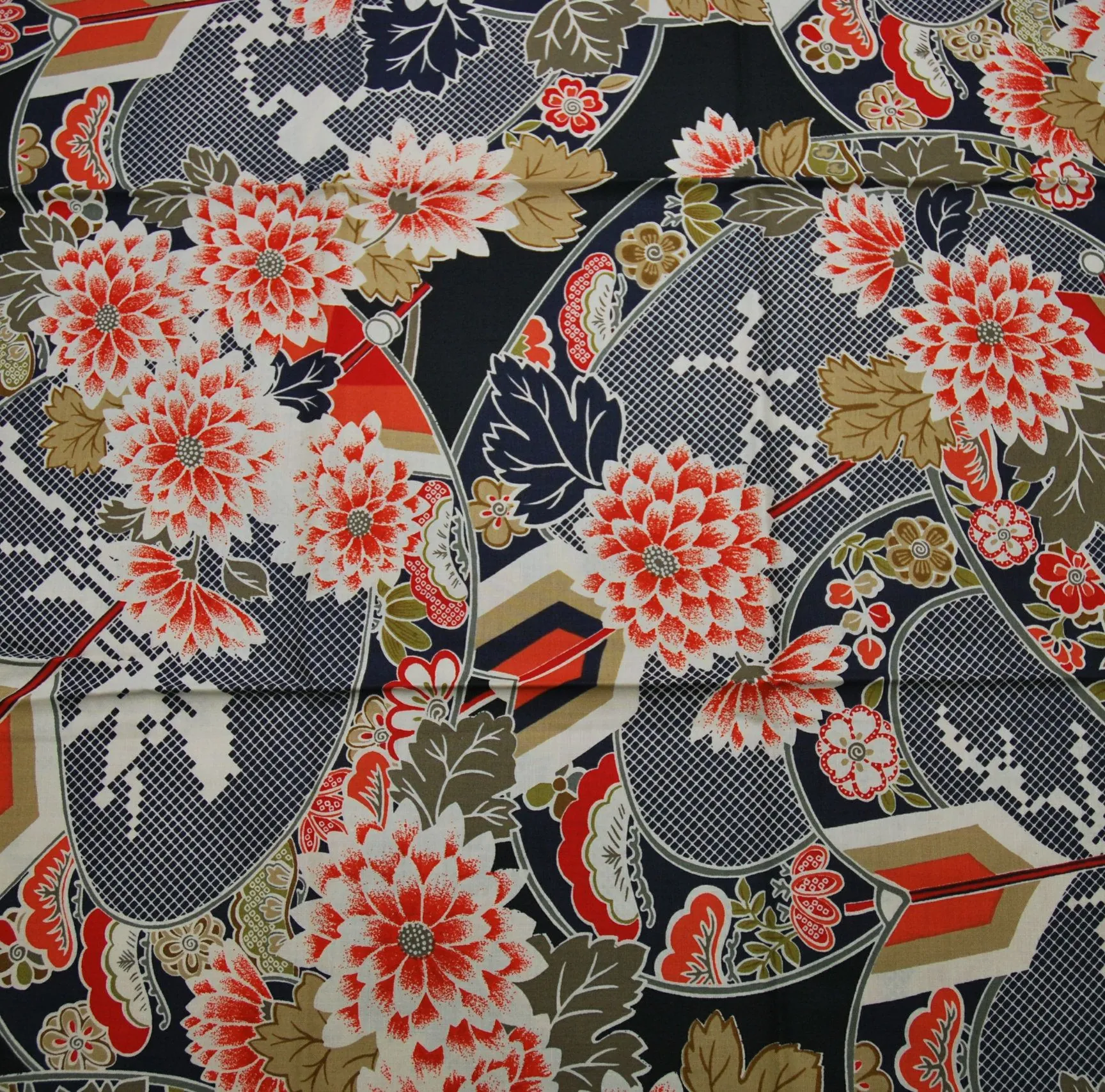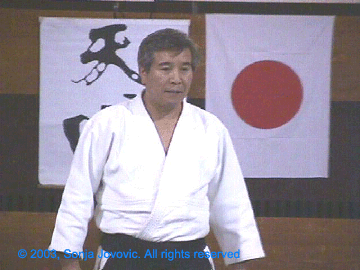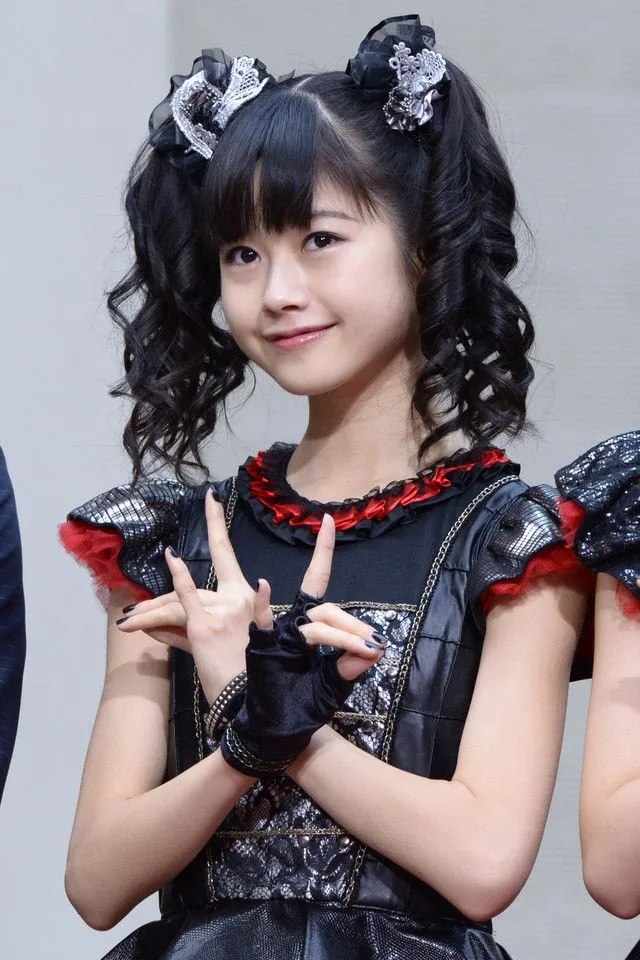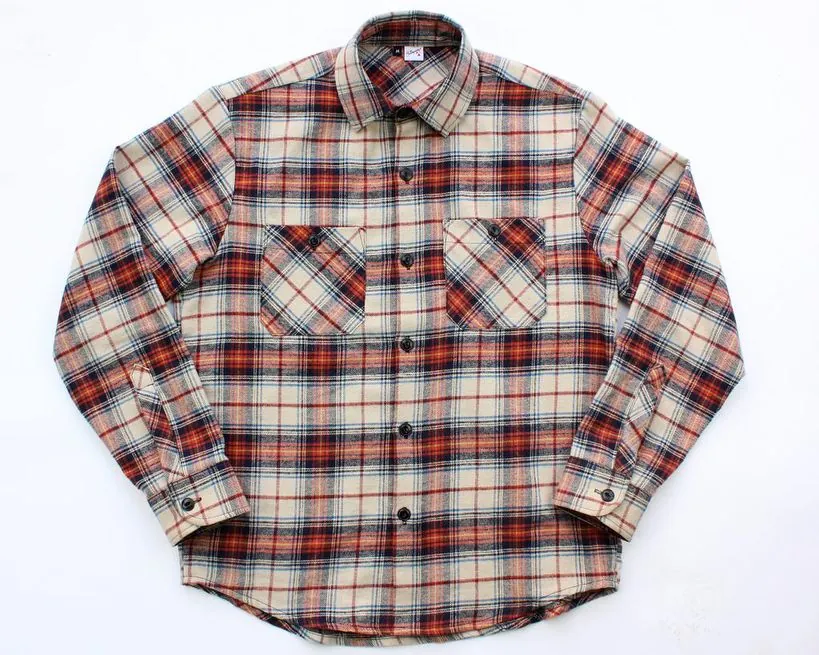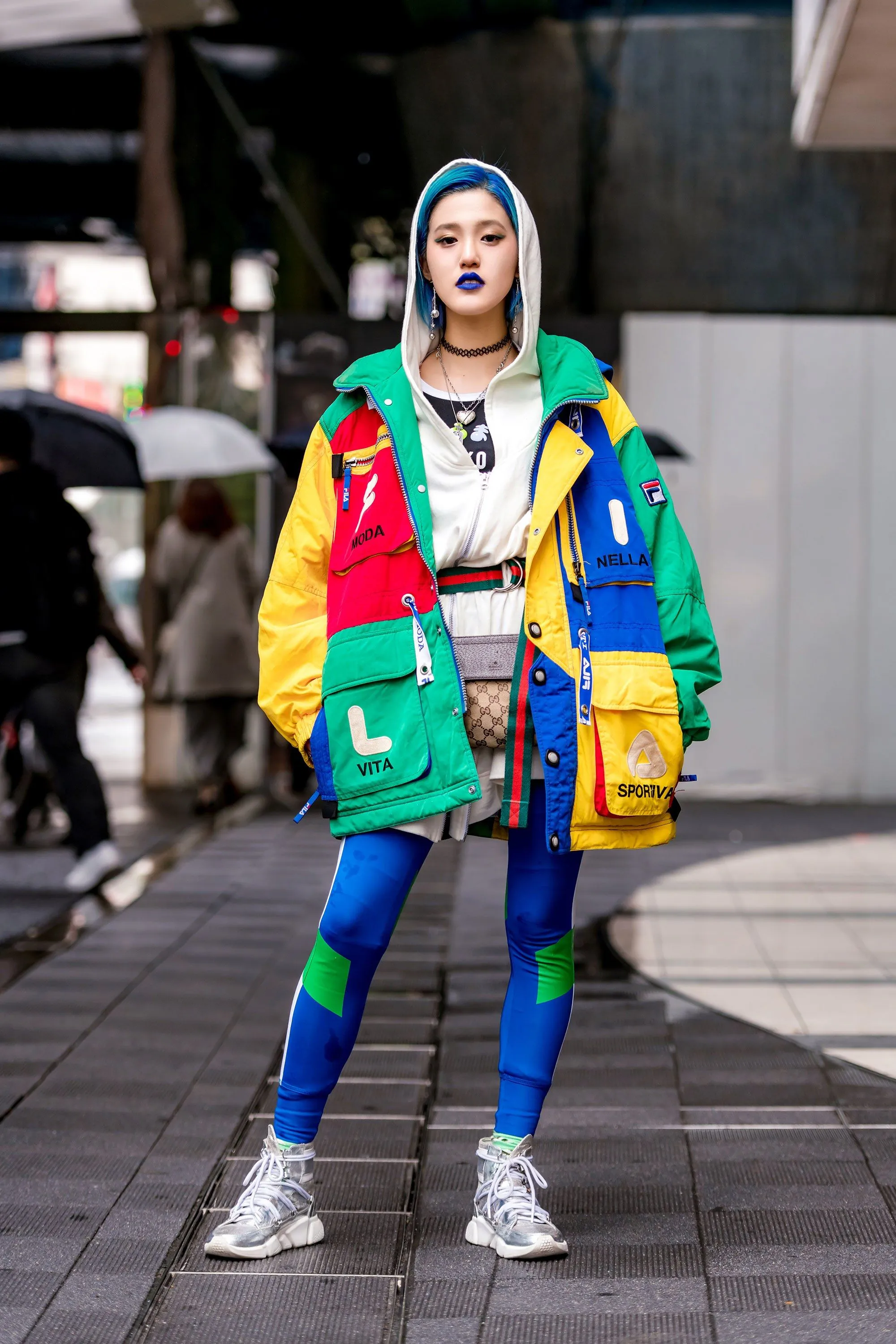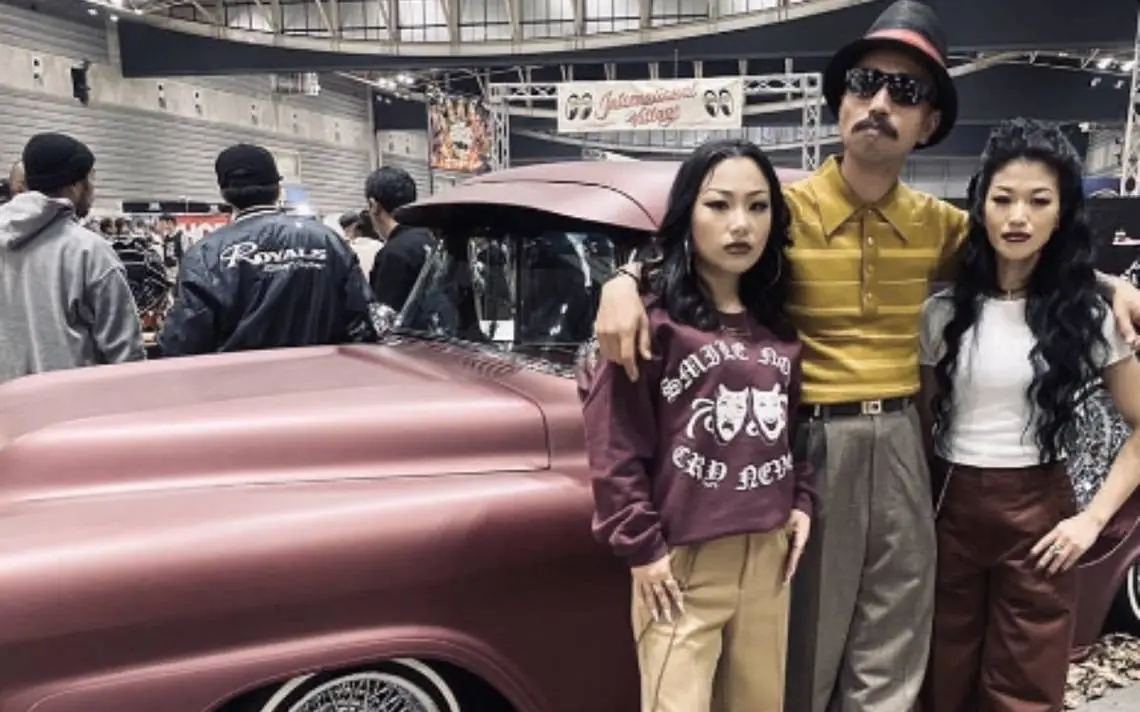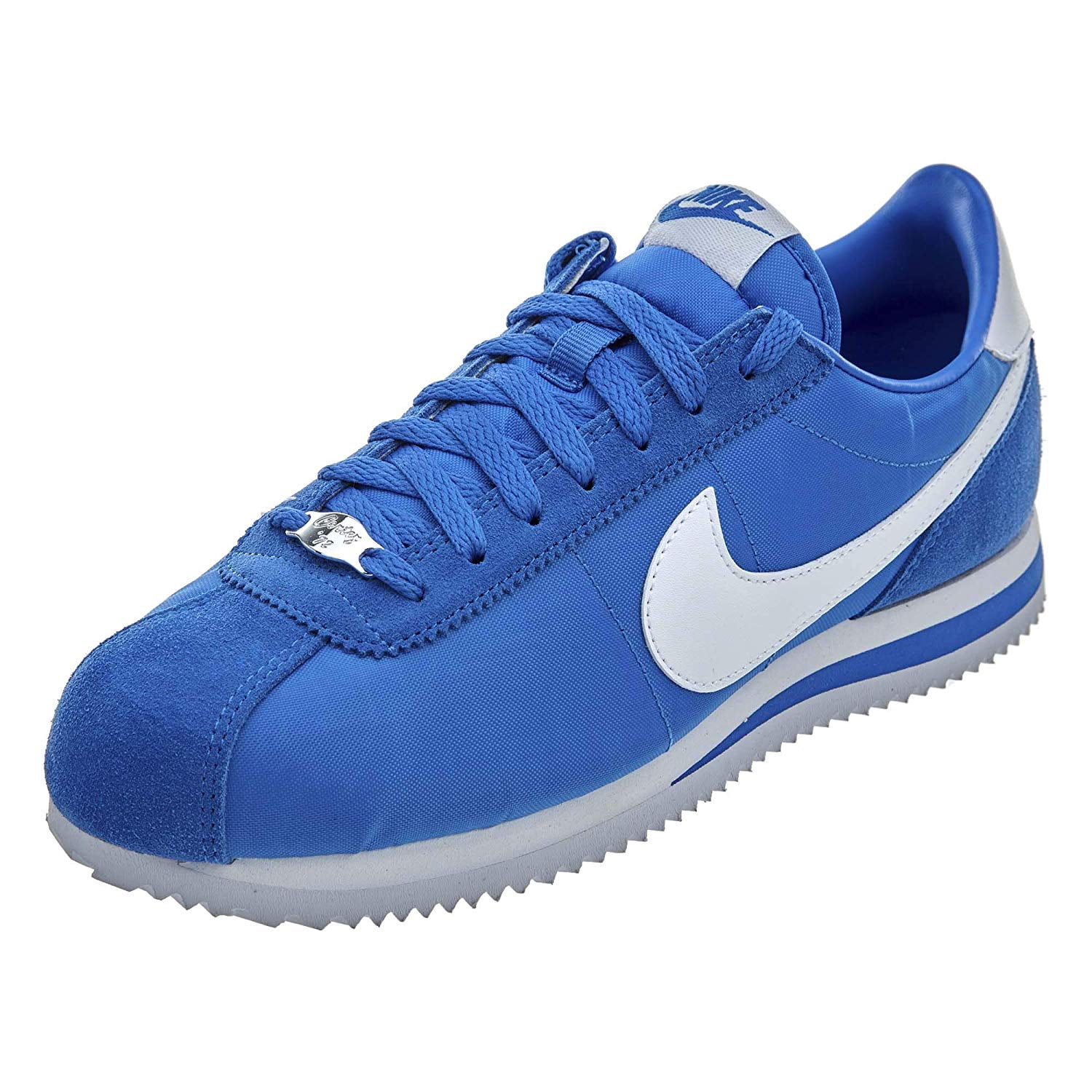Origins of Japan Cholo Culture
Win a Free Trip to Japan!
Experience cherry blossoms and ancient temples
Cholo meaning and its origins can be traced back to the Mexican-American communities of the 1940s and 1950s, where it began as a distinctive subculture marked by unique fashion, music, and art. The intriguing part of this narrative is how these elements crossed borders and found a new home in Japan. Cholo style was embraced by Japanese youth in the late 1980s and 1990s, aligning perfectly with Japan’s fascination with diverse subcultures and rebellion against mainstream norms.
Key Influences on the Adoption
Chicano culture in Japan saw its roots grow deep due to several pivotal elements:
- Globalization: Increased accessibility to American media, music, and fashion showcased the vibrant world of Chicano and cholo style to Japanese audiences.
- Japanese Lowrider Community: The popularity of lowrider cars among Japanese enthusiasts brought with it a natural affiliation with Chicano culture, leading to a full embrace of Japanese cholos.
- Music and Media: The influence of popular genres like hip-hop, which carry elements of Chicano culture, also played a significant role.
Sociocultural Milestones
The journey of asian cholos and their emergence in Japan saw several sociocultural milestones:
| Milestones | Description |
|---|---|
| 1980s: | Booming interest in Western subcultures, including hip-hop and lowriders. |
| Early 1990s: | First sightings of Japanese cholos imitating cholo outfits and style. |
| 1990s-2000s: | Widespread adoption of Japanese urban streetwear inspired directly by Chicano culture in Japan. |
The cholo outfit is not just about clothing; it represents a deeper connection to a countercultural community, something that resonates strongly with parts of Japanese society. This unique blending has given rise to a distinctive Japanese urban streetwear scene, heavily influenced by Japanese cholos.
In conclusion, the origins of asian cholos and their heartfelt connection to Chicano culture in Japan illustrate how subcultures can transcend geographical boundaries and find new interpretations in different societies.
The Meaning of Cholo in Japan
Understanding the cholo meaning in Japan requires delving into the intricate blend of Chicano culture in Japan and how this cultural phenomenon has been interpreted and embraced by the Japanese. Originally, the term “cholo” has its roots in Mexican-American communities, representing a distinctive and proud cultural identity that combines aspects of fashion, music, and lifestyle.
In the context of Japan, however, the cholo style has transcended its geographic origins to become a unique subculture. For many Japanese enthusiasts, adopting the cholo outfit goes beyond fashion; it signifies a deep respect and homage to Japan Chicano culture.
Key Elements of Cholo Meaning in Japan
- Cultural Appreciation: Rather than mere imitation, Japanese cholos emphasize understanding and appreciating the history and essence of Chicano culture.
- Identity Expression: For some, adopting the Chicano culture in Japan is a form of identity expression, integrating elements of strength, resilience, and pride.
- Community Building: The Japanese lowrider community often intersects with the cholo lifestyle, creating spaces where enthusiasts can share their passion for Japanese urban streetwear and lowrider cars.
Comparative Elements
Below is a table illustrating the differences and similarities between the cholo culture in the U.S. and Japan:
| Element | U.S. Cholo Culture | Japanese Cholo Culture |
|---|---|---|
| Fashion | Bandanas, flannel shirts, tailored pants | Similar items with local Japanese adaptations |
| Music | Lowrider oldies, rap, and Latin beats | Local Japanese rap and oldies combined |
| Automobiles | Classic American lowriders | Lowrider cars tailored to Japanese tastes |
| Community Focus | Neighborhood and gang affiliations | Clubs and associations focusing on shared passions |
In essence, the cholo meaning in Japan is a rich tapestry woven from threads of admiration, adaptation, and innovation, culminating in an authentic and respectful representation of a cherished cultural identity. Both asian cholos and traditional Japanese enthusiasts contribute to this vibrant subculture, beautifully merging the old and the new in the realm of Japanese urban streetwear.
Signature Cholo Styles Adopted by Japanese Enthusiasts
The cholo style has found a unique foothold in Japan, creating a vibrant cross-cultural fashion statement that blends traditional elements with a modern twist. Japanese enthusiasts are meticulous when it comes to replicating and interpreting the cholo outfit, incorporating distinct elements while adding their own flair.
Key Components of Japanese Cholo Style
Baggy Clothing: As a staple of cholo style, baggy pants and oversized shirts are pivotal. Japanese fans often don Dickies or other iconic brands, maintaining authenticity.
Bandanas and Hats: Bandanas are worn either on the forehead or around the neck, often paired with snapback caps. This headwear is integral to the cholo outfit, echoing its roots while integrating into Japanese fashion aesthetics.
Tattoos and Art: While tattoos are significant in many cultures, they hold particular importance in cholo style. Japanese interpreters often sport tattoos that mirror Chicano designs, merging them with traditional Japanese motifs.
Plaid Shirts: Buttoned at the collar and left open over a white T-shirt, plaid shirts are another staple. This combination represents a direct adoption of the cholo style while fitting seamlessly into the local urban environment.
Unique Twists by Japanese Enthusiasts
Japanese enthusiasts add local elements to give their cholo outfit a distinct touch:
Footwear: While keeping the essence of cholo style, Japanese fans might opt for specific sneakers popular in Japanese urban streetwear, blending the styles seamlessly.
Accessorizing: Silver chains, pendants, and sunglasses are commonly adopted but tailored to fit individual tastes, marrying cholo style with modern Japanese fashion trends.
“In Japan, we love the bold, confident look of cholos. It’s not just about clothing, but embracing a lifestyle that speaks to resilience and unity.”
Table: Traditional vs. Japanese Cholo Style
| Component | Traditional Cholo Style | Japanese Enthusiasts |
|---|---|---|
| Pants | Baggy Dickies or Ben Davis | Same, occasionally mixed with local brands |
| Shirts | Plaid shirts, buttoned at top | Same, often customized or layered |
| Headwear | Bandanas, snapback hats | Same, with slight local styling |
| Footwear | Chuck Taylors, Nike Cortez | Mix of traditional and local favorites |
| Accessories | Chain pendants, sunglasses | Adapted with modern Japanese influence |
Influence of Japanese Lowrider Community
Beyond clothing, the Japanese lowrider community plays a crucial role in shaping cholo style. Vintage cars and custom lowriders offer not just a mode of transport but a canvas for self-expression, closely intertwining with fashion.
With these elements combined, Japanese cholos create a unique yet authentic representation of cholo style, capturing its essence while making it their own.
How to Put Together a Cholo Outfit: The Japanese Way
Creating a cholo outfit with a Japanese twist blends traditional Chicano elements with unique Japanese influences. This distinctive style embodies the essence of Chicano culture in Japan while paying homage to its roots through fashion. Here’s how Japanese enthusiasts craft their own signature cholo style:
Key Elements of a Japanese Cholo Outfit
Baggy Clothing:
- Clothing Item | Description *—|—
- Pants | Loose-fitting Dickies or Ben Davis pants
- Shirts | Flannel shirts (often plaid) or oversized white T-shirts
Footwear:
- Sneakers (e.g., Nike Cortez) or classic cholo-inspired boots
Accessories:
- Bandanas – often tied around the head or neck
- Sunglasses – aviators or classic shades
- Chains – understated silver chains
Headwear:
- Lowrider caps or clean, slicked-back hair
Step-by-Step Guide to Assembling the Outfit
Start with Pants: Choose loose-fitting pants, specifically those from brands like Dickies or Ben Davis. The pants should be worn a bit lower on the waist.
Select the Top: Pair your pants with an oversized T-shirt or flannel shirt. For cooler weather, consider a hoodie underneath the flannel for layering, reminiscent of Japanese urban streetwear.
Pick Footwear: Opt for classic cholo sneakers or boots, ensuring they match the rest of your outfit.
Accessorize: Complete your look with key accessories. A neatly tied bandana, paired with subtle silver chains, can give your ensemble a polished finish.Accessories can be a finishing touch to the overall style of clothing, so it is necessary to customize cholo style PVC Patches to decorate your headscarf or clothing. Common patches are made up of simple patterns or letters, but DIY patches with your own style will not only be bright and creative, but also make your style look more stylish and unique, but also light and durable in outdoor environments.
Add Headwear: Choose a lowrider cap or ensure your hair is slicked back, aligning with the sharply groomed aesthetic.
Uniquely Japanese Touches
- Minimalist Influence: While the traditional cholo outfit embraces bold patterns and accessories, Japanese cholos often incorporate a muted, minimalist color palette.
- Japanese Fabrics: Integrating high-quality Japanese textiles elevates the sophistication of cholo style in Japan.
Japanese enthusiasts brilliantly adapt and expand upon Chicano culture, reflecting a seamless fusion of heritage and modern urban influences. This fashion phenomenon not only showcases Asian cholos‘ creativity but also underscores their dedication to authenticity within the Japanese lowrider community.
Popular Japanese Cholos and Their Influence
The Japanese Cholos community is vibrant and consists of numerous influential figures who have played pivotal roles in shaping and popularizing the culture. These cultural ambassadors have seamlessly blended traditional Chicano culture with Japanese urban streetwear, creating a unique, hybrid style that resonates with many young individuals in Japan.
Influential Figures in the Scene
A few notable Japanese Cholos have garnered significant attention:
- Kenji Shimizu: Recognized as a pioneer, Kenji has been instrumental in introducing Cholo meaning and aesthetics to the Japanese audience. His bold fashion choices and commitment to authenticity have inspired many.
- Yui Nakamoto: A prominent female figure in the community, Yui blends Cholo style with traditional Japanese elements, creating an empowering look for women in the community.
- Takeshi Tanaka: Known for his impressive collection of cholo outfits, Takeshi is a bridge between Tokyo streetwear and the Chicano movement. His Instagram is a hub of inspiration for many enthusiasts.
Influences and Contributions
These popular personalities not only wear the look but actively contribute to its cultural significance. Their influences can be examined in several ways:
| Influential Figure | Contributions | Impact |
|---|---|---|
| Kenji Shimizu | Hosted workshops and exhibitions | Raised awareness and understanding |
| Yui Nakamoto | Organized Chicana-themed fashion shows | Empowered women to embrace the style |
| Takeshi Tanaka | Collaborated with urban wear brands | Created a fusion of styles in streetwear |
Cultural Exchange and Evolution
The influence of Japanese Cholos extends beyond fashion. They have fostered a deeper understanding of Chicano culture in Japan, bringing together diverse elements such as art, music, and community values. Their work in promoting Japanese lowrider community activities illustrates how deeply the subculture has been embraced and adapted to fit localized traditions.
Conclusion
In summary, these influential Japanese Cholos continue to play an essential role in the cultural exchange between Japan and the Chicano community. Their efforts ensure the ongoing relevance and evolution of Japan’s Cholo-inspired subculture, making it an integral part of the broader tapestry of urban streetwear and lifestyle.
The Connection Between Japan Cholo and Japan Chicano Culture
The intricate web connecting Chicano culture in Japan and the cholo style reveals a fascinating cross-cultural exchange. To understand this bond, one must delve into the roots and influences that weave these communities together.
Chicano Culture’s Global Impact
Chicano culture, originating from the Mexican-American communities, has left significant impacts worldwide. This culture, enriched with elements of art, music, literature, and fashion, represents a unique blend of tradition and modernity. The connection crossed the Pacific when Japanese enthusiasts adopted and adapted these distinctive styles.
Shared Identity and Heritage
Japanese enthusiasts often regard Chicano culture as a parallel to their own historical experiences of assimilation and hybrid identity. This shared sense of an evolving identity fosters a deep respect and genuine passion for Chicano culture in Japan. This is not just mere mimicry but an embrace of a subculture that resonates with their experiences.
Adoption of Cholo Aesthetics
Cholo meaning goes beyond clothing; it represents a lifestyle rich in history and defiance. Japanese adopters of cholo style have seamlessly integrated this aesthetic into their own cultural fabric. They often emphasize:
- High-waisted Dickies
- Flannel shirts
- Bandanas and hats
Collaboration and Mutual Respect
Prominent figures in both cultures have cultivated collaborative efforts that underscore mutual respect. For instance, influential Japanese urban streetwear designers often collaborate with Chicano culture icons, creating symbiotic relationships in fashion and cultural representation.
Influence on Lifestyle Choices
The influence extends into lifestyle choices, such as the love for lowrider cars. The Japanese lowrider community epitomizes the blending of Japanese urban streetwear and Chicano culture in Japan. Regular gatherings, featuring classic cars adorned with customized art, highlight the community’s dedication and passion.
In summary, the significant connection between Japanese cholos and Chicano culture in Japan is evident through shared identities, collaborative fashion, and lifestyle influences that foster a unique cross-cultural exchange. This bridge brings global and local communities closer, enriching the cultural landscapes on both sides.
Exploring the Asian Cholos Phenomenon
The phenomenon of Asian cholos is a fascinating example of cultural exchange, wherein individuals from Japan have adopted and adapted elements of the traditional Chicano culture. This curiosity has led to the emergence of the Japanese cholos who blend their native heritage with the stylistic and cultural identifiers of Chicano lifestyle. Here’s a closer look at this phenomenon:
Key Characteristics:
- Fashion: The cholo style is easily recognizable by its signature elements such as baggy pants, oversized flannel shirts, and bandanas. Japanese enthusiasts often incorporate these elements into their everyday wear.
- Tattoos: Intricate tattoos, usually symbolic, form a significant part of the cholo meaning and are embraced by many in the Japan Chicano culture.
- Language and Music: Some Japanese cholos have taken to studying Spanglish and listening to Chicano rap, bridging the linguistic gap.
Influences on Japanese Fashion:
Japanese urban streetwear has seen a transformation due to the influence of cholo outfit aesthetics. Brands often feature designs that pay homage to the gritty, yet artistic, nuances of Chicano culture.
| Aspect | Cholo Influence |
|---|---|
| Clothing | Baggy pants, oversized tees, flannel shirts, and bandanas |
| Tattoos | Chicano-inspired intricate tattoos |
| Language | Adoption of Spanglish in colloquial terms |
| Music | Preference for Chicano rap and associated genres |
Community and Unity:
The Japanese lowrider community also reflects the impact of the cholo style. Lowriders, with their vibrant, customized vehicles, symbolize the cultural affinity and respect Japanese cholos hold for the original American Chicano culture.
Through these elements, the phenomenon of Asian cholos showcases how Japanese enthusiasts embrace and integrate a distinctive cultural identity, creating a unique and enriching subculture within their society.
Japanese Urban Streetwear: A Cholo Influence
The Japanese Urban Streetwear scene is a vibrant and ever-evolving culture that draws inspiration from various global subcultures. One of the most significant influences in shaping this unique fashion is the Cholo style. Rooted in the Chicano culture of the United States, the cholo meaning and aesthetic have been embraced and reinterpreted by enthusiasts in Japan.
Key Elements of Cholo-Inspired Streetwear
The Cholo style symbolizes a blend of boldness and heritage, which resonates with many Japanese fashion enthusiasts. Here are some key elements that define this unique fusion:
- Oversized Dickies Pants: Typically in khaki or dark colors, these are a staple in Chicano fashion.
- Flannel Shirts: Often worn buttoned up to the top but left open.
- Bandanas and Beanies: Essential accessories that provide a tough, street-smart look.
- Nike Cortez Sneakers: A classic choice for maintaining authenticity.
- Tattoos and Accessories: Icons reflecting Chicano heritage, like religious symbols and lowriders.
Comparing Japanese and Chicano Styles
| Feature | Chicano Culture | Japanese Urban Streetwear |
|---|---|---|
| Footwear | Nike Cortez, Vans | Similar, often includes contemporary brands |
| Bottoms | Oversized Dickies, high-waisted jeans | Typically oversized, inspired by original |
| Tops | Flannel shirts, tank tops | Flannels, but include Japanese street brands |
| Headwear | Bandanas, beanies | Mix of traditional and trendy Japanese hats |
| Accessories | Tattoos, religious symbols, lowrider influences | Minimalist adaptations, heavy on symbolism |
Influences on Japanese Pop Culture
The influence of Chicano culture in Japan can be seen beyond just fashion. It extends into music, art, and even automotive enthusiasm, particularly within the Japanese lowrider community. Japanese enthusiasts have blended traditional Chicano aesthetics with local elements to create a distinctive style.
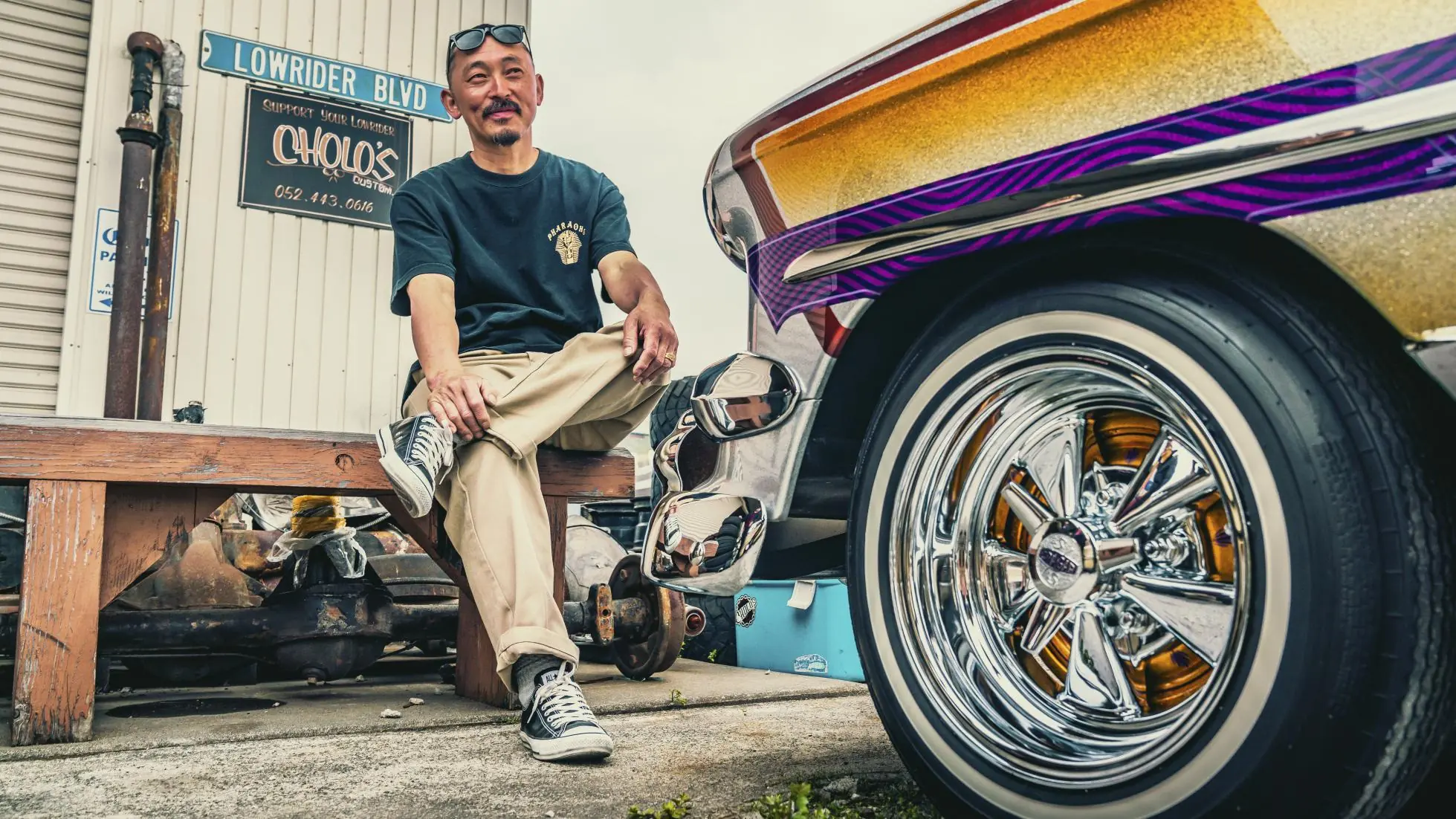
Conclusion
The Cholo outfit has thus found a unique expression in Japanese urban streetwear, illustrating a fascinating cross-cultural integration. Enthusiasts, from Japanese cholos to mainstream urban wear fans, continue to redefine and celebrate this fusion, contributing to its dynamic evolution in Japan’s vibrant fashion landscape.
Inside the Japanese Lowrider Community
The Japanese lowrider community offers a stunning blend of Chicano culture in Japan and local urban influences, creating a unique subculture that has garnered significant global attention. Originating in the 1980s, this community today reflects authenticity and meticulous attention to detail that rivals, and in some cases even surpasses, that of its Western counterparts.
A Culture of Craftsmanship
Japanese lowrider enthusiasts often dedicate countless hours to perfecting their vehicles, ensuring every aspect, from hydraulics to paint jobs, is done with precision. These cars are not just modes of transportation but symbols of artistic expression and cultural identity.
- Hydraulics systems: Custom-built for optimum performance and aesthetics
- Paint jobs: Intricate designs that often feature bold, vibrant colors
- Interiors: Luxuriously customized with high-end materials
Notable Figures and Groups
Several individuals and groups have become iconic within the Japanese lowrider community, influencing both aesthetics and cultural practices.
- Rocky’s Custom Shop: Known for its bespoke modifications
- Akio ‘Cholo’ Nakanishi: A pioneer in adopting and promoting Cholo style within Japan
- Yuichi Yazawa: Combines Japanese urban streetwear with lowrider culture
Shared Experiences Through Events
Events and meetups highlight the spirit of camaraderie and mutual respect within this subculture.
- Lowrider Car Shows: Platforms for enthusiasts to showcase their masterpieces
- Cruise Nights: Community gatherings where lowriders parade through urban roads
- Workshops: Sessions focused on sharing knowledge and skills related to customizing and maintaining lowriders
The Cultural Fusion
The fusion of Japanese urban streetwear and Cholo outfit elements is a key feature of these events. It’s here that the japan chicano culture shines brightest, displaying a highly stylized but deeply respectful homage to the original Cholo meaning and its heritage.
“Lowriders in Japan aren’t just about cars; they’re about a lifestyle, a statement, and honoring a culture that transcends borders.”
Looking Ahead
The future of the Japanese lowrider community seems promising as younger generations continue to embrace and innovate upon these traditions. With each passing year, the blend of asian cholos elements and traditional customs will likely continue to evolve, solidifying its place in global subculture.
Future of Cholo Culture in Japan
Cholo culture has made a lasting impression on Japanese subcultures, showing deep roots in both aesthetics and lifestyle. So, what does the future hold for this unique cultural fusion? Numerous factors suggest that the Cholo style and its influence may continue evolving in Japan, blending traditional Japanese urban streetwear elements with the essence of Chicano culture.
Key Factors Influencing the Future
Continued Cultural Exchange
- Social media platforms and international travel make cultural exchange more accessible.
- Events and collaborations between Japanese and Chicano artists are on the rise.
Fashion Trends
- Cholo outfits are gradually becoming mainstream in Japan.
- Fashion designers are incorporating Cholo elements into their collections.
Youth Influence
- Young people in Japan are more open to adopting and adapting foreign cultures.
- Streetwear enthusiasts actively follow and replicate global trends, including those from Japanese lowrider communities and Japanese cholos.
Media Representation
- Increased visibility in films, television, and anime that feature Cholo style.
- Influencers and celebrities popularizing this fusion style.
Future Trends and Predictions
| Influencing Factor | Potential Outcomes |
|---|---|
| Fashion Trends | More hybrid designs in streetwear. |
| Media Representation | Higher awareness and acceptance. |
| Youth Influence | New subcultures emerging, blending even more. |
| Continued Cultural Exchange | Ongoing input from global Chicano culture. |
As these elements continue to shape Chicano culture in Japan, we can expect to see further innovations in both fashion and lifestyle practices. Local designers may take inspiration from the Japanese urban streetwear scene while paying homage to the traditional Cholo style. Additionally, increasing global connectivity ensures that Japan Chicano culture will continue flourishing with fresh, diverse influences from all over the world.
In summary, the future of Cholo culture in Japan looks promising, driven by cultural exchange, fashion evolution, and enthusiastic adoption by the younger generation. As barriers collapse and cultures blend, this unique phenomenon is poised to innovate and expand well into the future.
Frequently Asked Questions
What is Cholo Culture, and how did it spread to Japan?
Cholo culture originated in the Mexican-American communities in the United States, characterized by a distinct style that includes specific fashion, music, and language. The culture emphasizes values such as family, respect, and community. Its spread to Japan can be attributed to the globalization of media, music, and fashion. Japanese youth, particularly those fascinated by American street culture, adopted and adapted Cholo elements, creating a unique subculture that reflects their own identities while paying homage to the original Cholo traditions.
What are the key elements of Cholo Culture in Japan?
In Japan, Cholo culture can be identified by its distinctive fashion—a blend of baggy pants, oversized shirts, bandanas, and tattoos. Japanese Cholxs also embrace lowrider car culture, often customizing classic American cars intricately. The community speaks a mix of Japanese and English, sometimes incorporating Spanish slang. Music plays a crucial role, with many turning to genres such as old-school hip-hop, rap, and Chicano rap to express their cultural affiliation.
How do Japanese Cholos balance their cultural duality?
Japanese Cholos often navigate dual cultural identities by integrating traditional Japanese values with Cholo culture. Respect for elders, teamwork, and social harmony are key Japanese traits seamlessly blended into the Cholo lifestyle. This results in a unique interpretation where cultural practices from both traditions coexist harmoniously. Such a balance allows them to maintain their Japanese roots while expressing their admiration for Cholo culture.
What challenges does the Japanese Cholo community face?
The Japanese Cholo community faces several challenges, including societal stigma and misunderstanding. Many people in Japan may view Cholo culture as synonymous with delinquency or rebellious behavior due to its association with gangs in American media. This stereotype can lead to prejudice and discrimination. Furthermore, there is the challenge of cultural appropriation; some may criticize Japanese Cholos for adopting elements of a culture with deep social and historical significance to Mexican-Americans, questioning the authenticity and respectfulness of their representation.
